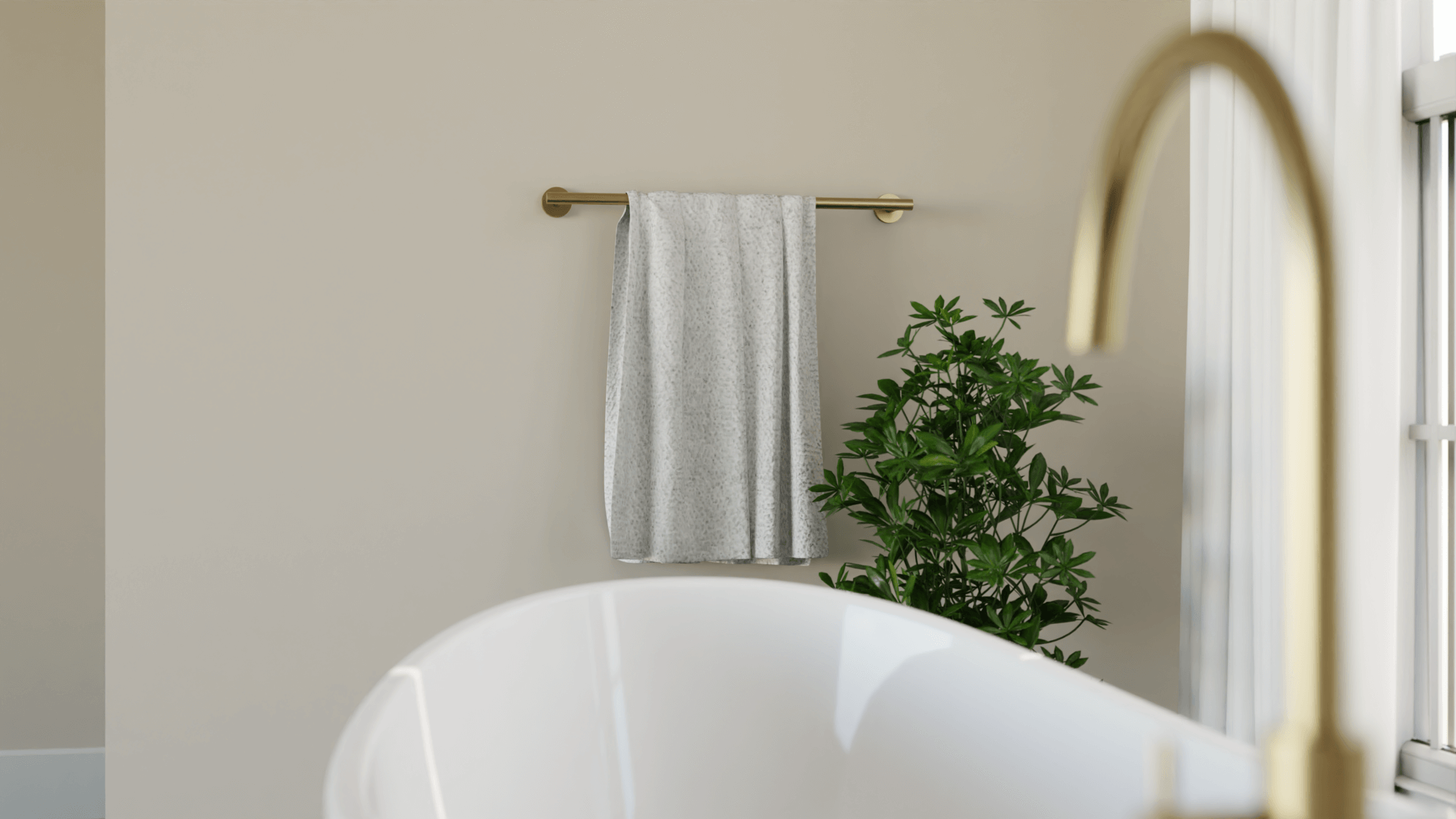What is the Best Faucet Finish for Hard Water?

Hard water is one of the biggest challenges to keeping your faucets and fixtures clean. It can persistently be a nuisance in many households, leaving unsightly mineral deposits. In this comprehensive guide, we’ll delve deeper into what hard water is and what hard water deposits are. We’ll also rank the best and worst faucet finish for hard water based on their ability to hide these stubborn stains.
Hard Water

What Is Hard Water?
Hard water is a common water quality issue caused by a high concentration of dissolved minerals, primarily calcium and magnesium ions. Water picks up these minerals as it flows through geological formations, originating from natural sources in the earth’s crust. When hard water comes into contact with surfaces, especially as it dries or is heated, it can leave mineral deposits behind. People commonly refer to these deposits as limescale or scale.
What Are Hard Water Deposits?
As previously mentioned, hard water deposits are mineral buildups accumulating on various surfaces, including faucets and fixtures. Over time, these deposits can create a chalky, crusty, or cloudy appearance on the affected surfaces. In addition to their unsightly appearance, they can reduce water flow and even impair the functionality of faucets and other fixtures.
Best Faucet Finishes for Hiding Hard Water Deposits

Satin Nickel
Satin nickel finishes are renowned for being the best faucet finish for effectively hiding hard water stains. Satin nickel fixtures have a slightly textured surface and matte appearance, which reduces the visibility of water spots and mineral deposits. Moreover, the satin nickel color, often a soft silver-gray, is quite similar in hue to the color of typical water deposits. The similarity in color between satin nickel and water deposits can be advantageous, as it can create a visual camouflage effect. While hard water deposits may still be visible upon close inspection, they blend in better with the satin nickel finish, making them less conspicuous than finishes with high reflectivity and greater color contrast. This feature makes satin nickel a popular choice for those seeking both style and practicality in combating hard water-related issues.
Satin Brass
Satin brass finishes are becoming increasingly popular in the decorative plumbing industry. The finishing process for satin brass is similar to satin nickel’s. This fact means that satin brass also has a textured appearance that works well for hiding hard water stains. Their warm, inviting color complements various design styles and can maintain their aesthetic appeal even in hard water-prone areas. However, the color contrast with water deposits may be slightly more noticeable than satin nickel.
Worst Faucet Finishes for Hiding Hard Water Deposits

Matte Black
Matte black finishes have gained popularity for their modern and sleek appearance. While they may hide some water spots better than shiny finishes, they have a significant drawback regarding hard water stains. The dark color of matte black can create a noticeable contrast with the typically light gray or white hard water deposits. As a result, these deposits tend to stand out starkly on matte black surfaces, making them more visible and potentially more challenging to conceal.
Chrome
Many people often believe that chrome finishes are resistant to hard water stains due to their light color. While this is somewhat true, their high reflectivity can work against them. Since mineral deposits have a matte, light-gray appearance, chrome’s shiny surface starkly contrasts them, making them highly visible. The reflective quality of chrome can amplify the appearance of water spots and mineral buildup. As a result, this can leave faucets looking less attractive.
Polished Nickel
Like chrome, polished nickel finishes are highly reflective, which can be a double-edged sword for hard water deposits. While the light color might seem ideal for hiding stains, the reflective surface can make these deposits more noticeable due to the contrast in appearance. The high shine of polished nickel can accentuate water spots and mineral buildup, detracting from the faucet’s overall look.
It’s essential to consider the potential challenges these finishes pose when dealing with hard water in your area. While matte black, chrome, and polished nickel may have aesthetic appeal, they may require more diligent maintenance and cleaning to keep hard water deposits at bay. Progressive maintenance and suitable cleaning products may be necessary to maintain the pristine appearance of these finishes when installed in regions with hard water. Check out our cleaning guides below.
How to Clean Chrome and Satin Faucets
How to Clean Matte Black Faucets
Conclusion
In summary, your faucet finish can significantly impact how effectively it conceals hard water deposits. Satin nickel and satin brass are top choices. Satin nickel offers the added advantage of resembling water deposits in color, making them less conspicuous. In contrast, while visually appealing, matte black, chrome, and polished nickel finishes can highlight hard water stains due to color contrast and reflectivity. Regular cleaning and maintenance remain crucial in hard water-prone areas to keep your faucets looking their best.
Icons sourced from www.flaticon.com
Get in touch
Have a question or need something bespoke?
Enter your details and one of our experienced team members will get back to you shortly.


